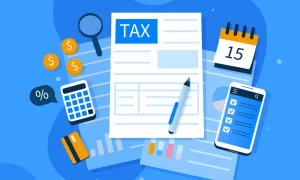
Let’s face it—credit scoring hasn’t changed much in decades. Sure, the math got fancier, but the core idea stayed the same: crunch a few numbers, slap on a score, and call it a day. But now? AI is flipping the script. And honestly, it’s about time.
How Traditional Credit Scoring Works (and Where It Falls Short)
Traditional credit scoring models—think FICO or VantageScore—rely on a handful of factors: payment history, credit utilization, length of credit history, and so on. The problem? They’re rigid. Like trying to judge a modern smartphone by its ability to make calls—ignoring the camera, apps, and, well, everything else that matters today.
Here’s where traditional models struggle:
- Limited data: They ignore things like rent payments, utility bills, or even banking behavior—data points that could tell a fuller story.
- Slow updates: Miss a payment? It lingers on your report like a bad haircut in an old photo.
- One-size-fits-all: A small business owner’s financial life doesn’t fit neatly into the same box as a salaried employee’s.
Enter AI: The Game Changer
AI-powered credit scoring doesn’t just tweak the old system—it rebuilds it from the ground up. Using machine learning, these models analyze thousands of data points, spotting patterns humans (or older algorithms) would miss. It’s like swapping out a flip phone for a smartphone with facial recognition.
What Makes AI Different?
For starters, AI doesn’t just look at what you’ve done—it predicts what you’ll do. Here’s how:
- Alternative data: Social media activity? Shopping habits? Even how you fill out an application form. AI uses it all.
- Real-time updates: Your score isn’t stuck in the past. AI adjusts on the fly, like a GPS recalculating your route.
- Personalization: No more rigid categories. AI tailors scores to individual behaviors, not broad stereotypes.
The Good, the Bad, and the… Unsettling?
AI-powered credit scoring isn’t all sunshine and rainbows. Sure, it’s more accurate—but that accuracy comes with trade-offs.
The Upsides
- Financial inclusion: Millions of “credit invisibles” finally get a fair shot.
- Better risk assessment: Lenders can say “yes” more often without taking on extra risk.
- Fraud detection: AI spots shady behavior faster than a bouncer at a VIP club.
The Downsides
- Privacy concerns: Do you really want an algorithm judging you based on your Amazon purchases?
- Black box problem: Even experts struggle to explain why AI makes certain decisions.
- Bias risks: If the data’s biased, the AI will be too—just faster and harder to detect.
Traditional vs. AI: A Side-by-Side Look
| Factor | Traditional Models | AI-Powered Models |
| Data Sources | Limited (credit history, loans) | Expansive (social, transactional, behavioral) |
| Speed | Slow (monthly updates) | Real-time |
| Flexibility | Rigid categories | Dynamic, personalized |
| Transparency | Clear rules | Often opaque (“black box”) |
What’s Next? The Future of Credit Scoring
AI isn’t just changing credit scoring—it’s forcing the entire financial industry to adapt. We’re already seeing hybrid models (mixing AI with traditional methods) and stricter regulations to keep AI in check. The question isn’t if AI will dominate, but how we’ll manage its power responsibly.
One thing’s for sure: the days of judging creditworthiness with a handful of numbers are numbered. And honestly? It’s about time.








